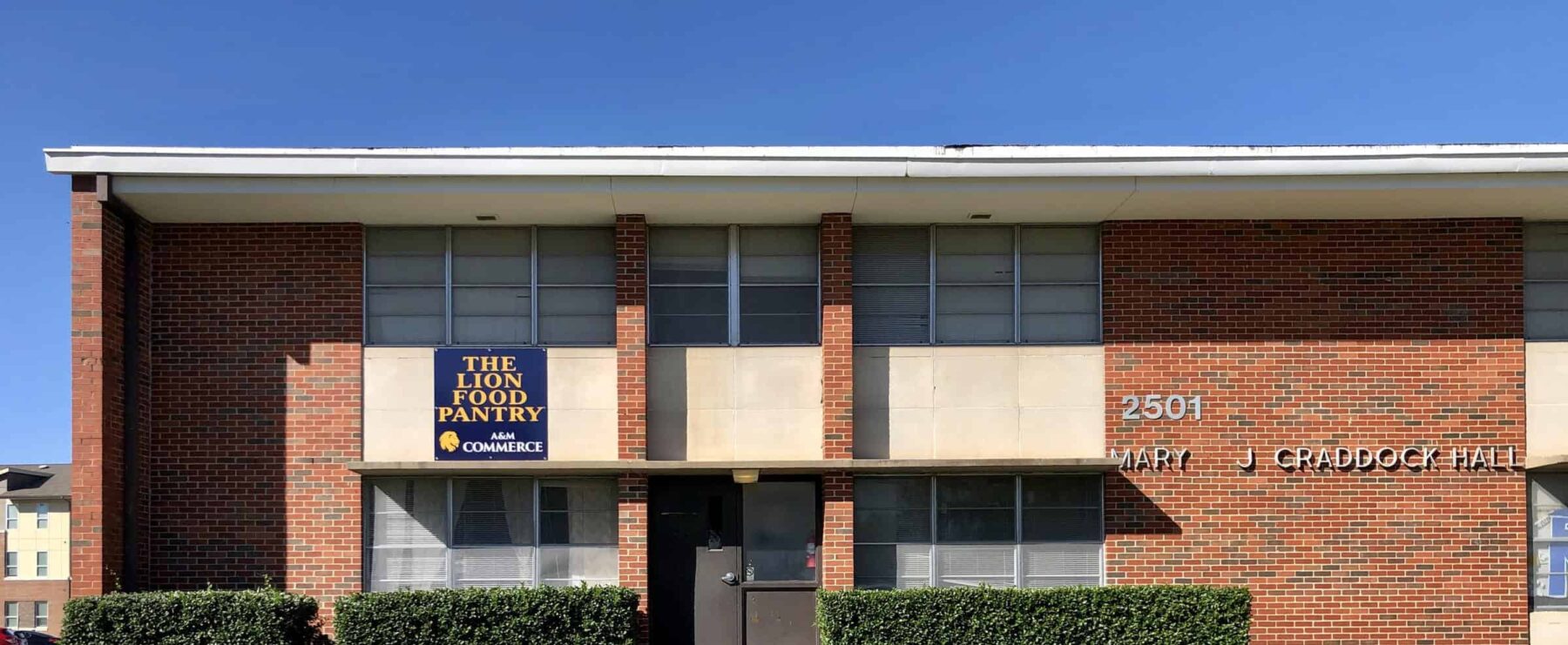
A&M-Commerce’s Answer To Food Insecurity Among College Students
By Jerrod Knight, KETR.org
Food insecurity can lead to health and social maladies and can affect some groups that you may not expect. KETR's Jerrod Knight visits a food pantry that exclusively serves students enrolled in college at northeast Texas four-year university.
Interview transcript follows:
Jerrod Knight: On a crisp fall morning in northeast Texas, the doors are about to open into a pair of apartment units that have been converted into use as a food pantry. Inside, volunteers are already unpacking the latest donations of food and toiletry items, and pantry clients are beginning to mill about outside in the parking lot, ready to pop in and do what shopping they can this week.
So far, this could describe just about any food pantry dotted across the nation, particularly in rural America, where nearly 17% of households faced food insecurity in 2018, compared with nearly 14% of households in metropolitan areas, according to the food research and action center.
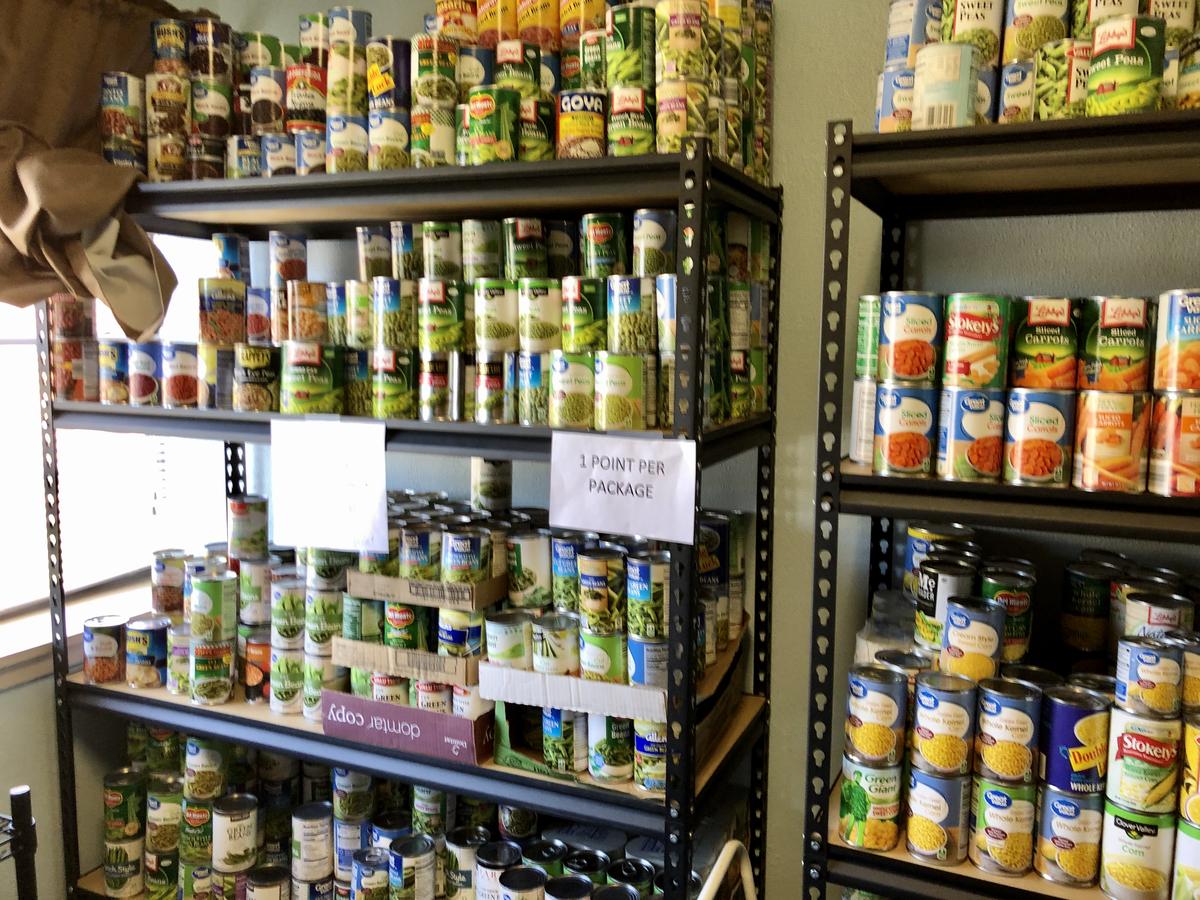
Well-stocked shelves at the Lion Food Pantry. CREDIT JERROD KNIGHT
But this food pantry isn't like others in every way. This vital nutritional resource, and the modified apartment it resides in, is tucked away in a dormitory building – on a university campus – and exclusively serves enrolled college students.
Elisabet Martinez: A lot of the cases you see is that these individuals' families are giving them what they can, and they're kind of embarrassed to come. And they might not want to come, but there comes a part where we teach not only our students but our family members… I know being a first-generation student is very hard. And trying to share with your family that's already struggling… trying to share those struggles with them when they're doing everything they can to get you where you're at… That's hard. Because you don't want to go back home and be like, “I'm not able to eat – I don't know where my next meal is going to come from.” And then there comes that kind of pride thing that comes with a lot of families where you don't reach out.
Knight: The college students that this pantry serves are enrolled at Texas A&M University-Commerce, formerly East Texas State University, about 60 miles northeast of Dallas in rural Commerce, Texas. The institution is part of the Texas A&M University system and boasts an enrollment of around 12,000 students.
Elisabet Martinez is a Victim Outreach Coordinator who works in the university's campus life and student development office.
Martinez: What we have noticed is that [use of the campus food pantry] has doubled this semester. The need has definitely shown this semester. People are most welcome to reach out, and about 50% of [visitors] are new visits, so that means the word is getting out more. We've seen people be very appreciative by word of mouth. Usually what we find is that sometimes they'll tell us, “I just didn't know this was here.” Or they'll email us because they don't want to come when someone else is here. And that's perfectly fine, but we're just here to support however we can. We have seen the numbers grow. [Food insecurity] is definitely on our campus. And I feel like it's more present especially when people don't receive the financial aid they thought they were going to get, or mid-semester when their financial aid has kind of run out as well. Finding the exact number [of pantry users] on our campus is hard because some individuals are still trying to figure us out and we're marketing as best we can. And also making sure those students are OK with coming is another barrier, but definitely I've seen the numbers grow since I've been here. And we do ask if they need anything else and we've progressively changed things to make it easier on [pantry visitors] as well.
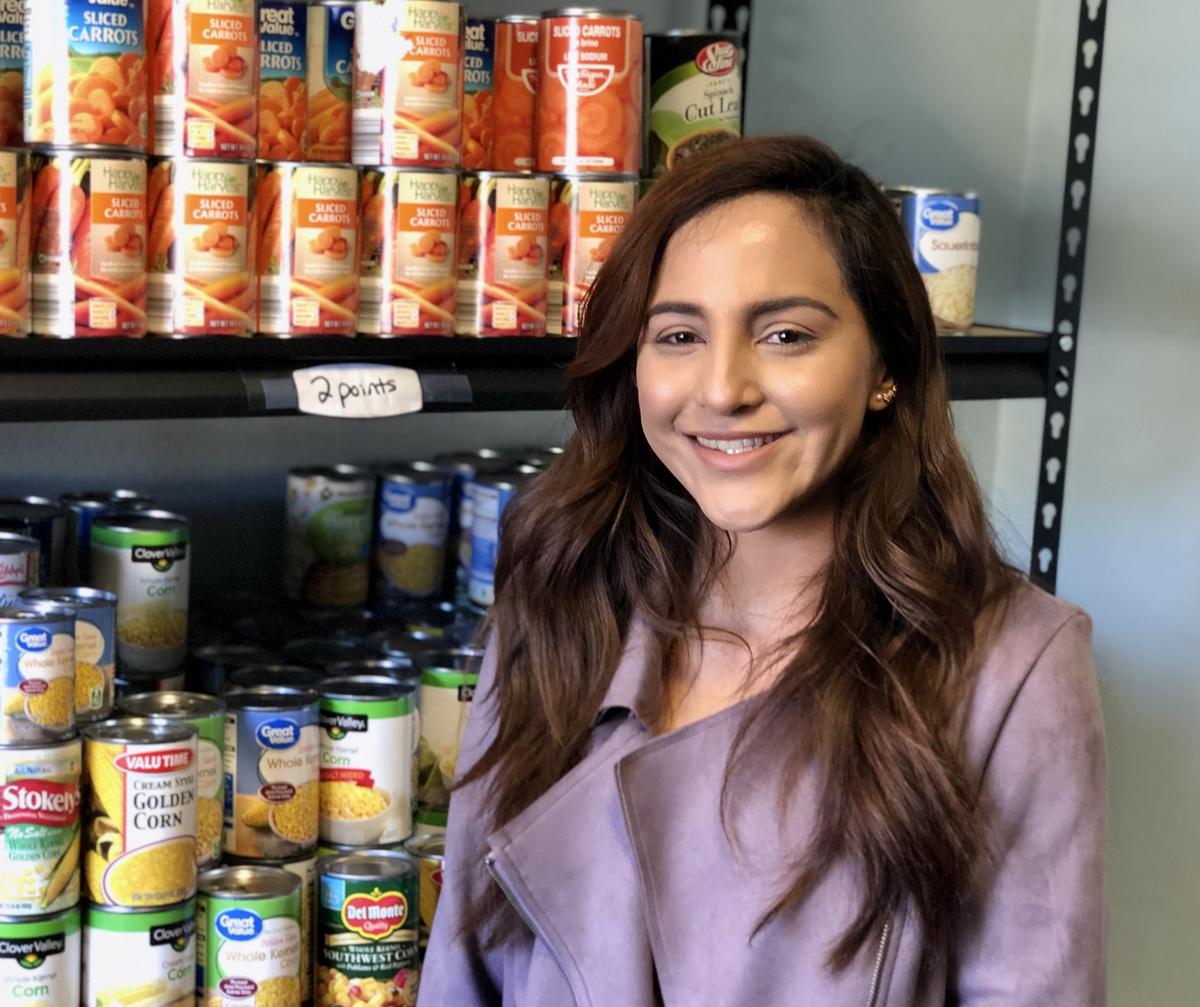
Elisabet Martinez is a Victim Outreach Coordinator with the office of Campus Life and Student Development at Texas A&M University-Commerce.CREDIT JERROD KNIGHT
Knight: Food insecurity – that is, lacking the ability to acquire nutritional resources, or lacking the availability of nutritional resources – among enrolled college students is not new. A study published in a 2014 edition of the Journal of Nutrition Education and Behavior looked at a sampling of students at a mid-sized rural university in Oregon and found that 59% of students reported having been food insecure at some point during the previous year. The study finds correlation between food insecurity and fair to poor health in students, and also correlation between food insecurity and an income of less than $15,000 per year, which could well define most college students.
Nikki Barnett is a Student Case Worker at A&M-Commerce and oversees the Lion Food Pantry effort and tries to keep tabs on national numbers.
Nikki Barnett: I want to say statistics say around 38% of college students are food insecure.
Knight: She's seen the correlation between food insecurity and decreased academic performance.
Barnett: First of all, obviously, if we're not properly nourished, we're not going to be able to concentrate, we're not going to be able put our thoughts into that. That just leads to them spending more of their time focusing on looking for food, or trying to figure out how to get a job… it's just something else that's adding to the struggle of balancing college life which is difficult enough. Another thing is: think about our students who come in and maybe when they were living with their families they were getting some type of government help. When they come here, they're no longer getting that help anymore, but their financial situation hasn't changed. And considering that a number of our students are receiving financial aid – probably the majority of students… they don't have extra money to come up with to buy food. That's just going to make their whole journey here more difficult, for sure.
Knight: Some users of the pantry services may seem surprising, given that many students living on campus have meal plans and access to campus dining services.
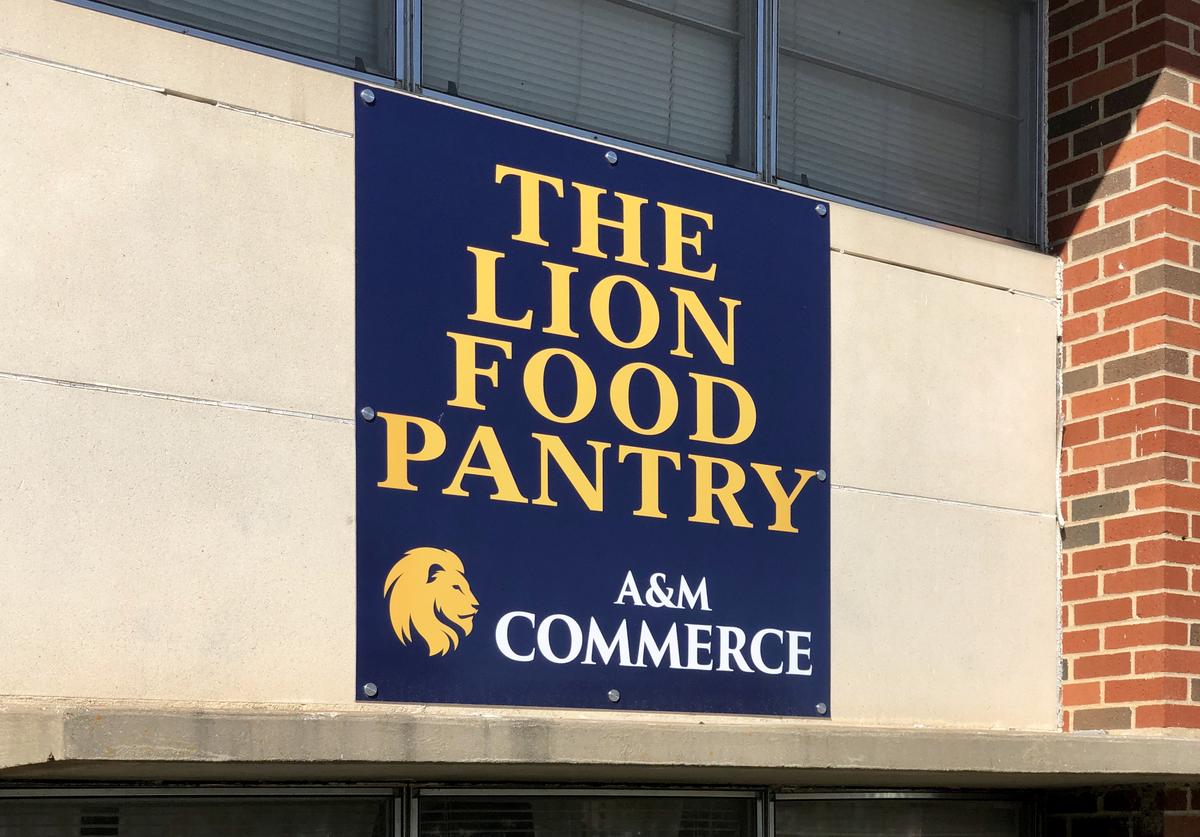
A sign above the food pantry door indicates its location in Craddock Hall.CREDIT JERROD KNIGHT
Barnett: Many students actually do not purchase meal plans. But, it doesn't matter. If they do purchase a meal plan or if they don't, we accept them either way. Because sometimes based on their schedule – we've found this to be the case with athletes – that sometimes by the time maybe their done practicing or going to work or class, maybe the cafeteria is closed. Just because they have a meal plan doesn't mean they're actually eating.
Rebecca Allen: Yeah, so, any student at Texas A&M University-Commerce that is registered for that semester and is in need of any food at all, or toiletry items, they can come to the Lion Food Pantry, they answer a couple of questions on one form, and they're able to walk through and get whatever food items they need, up to a certain limit.
Knight: That's Rebecca Allen, a social work major and volunteer organizer with the Lion Food Pantry. Back at the facility, volunteers are hard at work preparing for the day's rush.
Volunteer 1: We're sorting this stuff out because there were like donations boxes here and they were like filled with everything so we actually just pick out stuff and put them in the relevant boxes. We're organizing things so that they're easier to find.
Volunteer 2: Last semester we had a bunch of soup donated to us. In the picture you can see where they had like where they could open up and take two or three things of soup and it's just frozen – you just have to heat it up and it's all done. We haven't gotten any this semester though, so I don't know.
Knight: Martinez says that usage of the pantry is increasing in the four semesters its been in operation, and as the stigma clears, she expects the popularity of the service to grow as well.
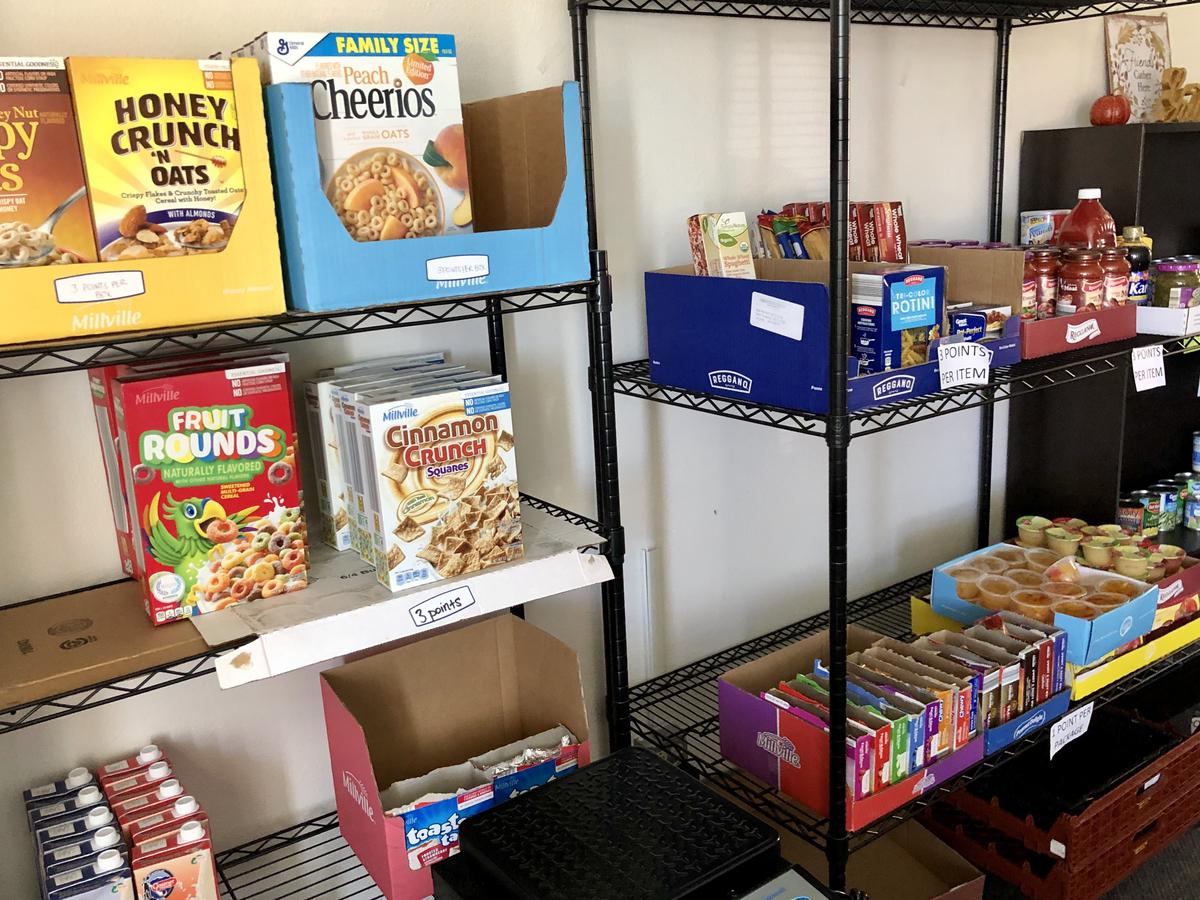
Canned foods, breakfast cereal, and dry goods are available for students to help make ends meet.CREDIT JERROD KNIGHT
Martinez: We actually do keep data based on information where users sign in and sign out. We also offer additional resources. When we first started we only had a two-man team. It was just me and Nikki at the beginning. As we've grown we've added additional [pantry] days. At first the stigma, the, “I don't want to come,” was a big thing. But because people have been speaking about the topic, it made it more of a comfortable situation for students and making it the norm, we've seen it grow. In the beginning we were seeing 10-15 visits per open day, now we're seeing 35-50 visits each time we open.
Knight: The A&M-Commerce Lion Food Pantry opens on Wednesdays during the regular semester from 11:00 a.m. until 4:00 p.m. and by appointment. For KETR News, I'm Jerrod Knight.
KETR is a public radio station licensed through Texas A&M University-Commerce that serves the communities of Northeast Texas at 88.9 FM and at KETR.org.
More Campus Life
View All Campus LifeMorris Recreation Center Prepares for Transformative Expansion
The expansion reflects Campus Recreation’s ongoing commitment to serving the university population and the surrounding community.

TAMUC Plans Eclipse Viewing Event for University Community, General Public
The public is invited to attend a free viewing event for the total solar eclipse on April 8, 2024 at Texas A&M University-Commerce. The event is scheduled from noon to 4 p.m. at A...
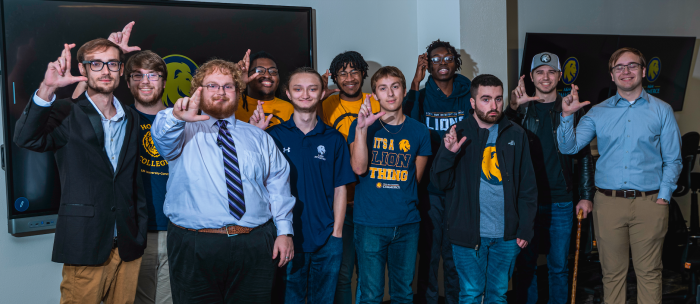
Not Just a Game: TAMUC Esports Club Impresses with Early Success and Substantial Growth
It's no secret that video gaming has exploded in popularity since its early days. Likewise, the Esports Club at Texas A&M University-Commerce has experienced rapid growth a...


